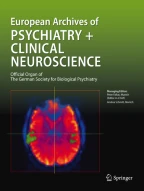Abstract
We investigated the effects of clozapine and haloperidol, drugs that are widely used in the treatment of schizophrenia, on gene expression in six cortical and subcortical brain regions of adult rats. Drug treatments started at postnatal day 85 and continued over a 12-week period. Ten animals received haloperidol (1 mg/kg bodyweight) and ten received clozapine (20 mg/kg bodyweight) orally each day. Ten control rats received no drugs. The ten genes selected for this study did not belong to the dopaminergic or serotoninergic systems, which are typically targeted by the two substances, but coded for proteins of the cytoskeleton and proteins belonging to the synaptic transmitter release machinery. Quantitative real-time PCR was performed in the prelimbic cortex, cingulate gyrus (CG1) and caudate putamen and in the hippocampal cornu ammonis 1 (CA1), cornu ammonis 3 (CA3) and dentate gyrus. Results show distinct patterns of gene expression under the influence of the two drugs, but also distinct gene regulations dependent on the brain regions. Haloperidol-medicated animals showed statistically significant downregulation of SNAP-25 in CA3 (p = 0.0134) and upregulation of STX1A in CA1 (p = 0.0133) compared to controls. Clozapine-treated animals showed significant downregulation of SNAP-25 in CG1 (p = 0.0013). Our results clearly reveal that the drugs’ effects are different between brain regions. These effects are possibly indirectly mediated through feedback mechanisms by proteins targeted by the drugs, but direct effects of haloperidol or clozapine on mechanisms of gene expression cannot be excluded.



Similar content being viewed by others
References
Kircher T, Thienel R (2006) Functional brain imaging of symptoms and cognition in schizophrenia. The boundaries of consciousness. Elsevier, Amsterdam, p 302
Harrison PJ, Eastwood SL (2001) Neuropathological studies of synaptic connectivity in the hippocampal formation in Schizophrenia. Hippocampus 11(5):508–519
Balu DT, Coyle JT (2011) Neuroplasticity signaling pathways linked to the pathophysiology of schizophrenia. Neurosci Biobehav Rev 35(3):848–870
Stephan KE, Baldeweg T, Friston KJ (2006) Synaptic plasticity and disconnection in schizophrenia. Biol Psychiatry 59:929–939
Gray LJ, Dean B, Kronsbein HC, Robinson PJ, Scarr E (2010) Region and diagnosis-specific changes in synaptic proteins in schizophrenia and bipolar I disorder. Psychiatry Res 178(2):374–380
Bowden NA, Scott RJ, Tooney PA (2008) Altered gene expression in the superior temporal gyrus in schizophrenia. BMC Genom 9:199–211
Schmitt A, Leonardi-Essmann F, Durrenberger PP, Wichert SP, Spanagel R, Arzberger T, Kretzschmar H, Zink M, Herrera-Marscitz M, Reynolds R, Rossner MJ, Falkai P, Gebicke-Haerter PJ (2012) Structural synaptic elements are differentially regulated in superior temporal cortex of schizophrenia patients. Eur Arch Psychiatry Clin Neurosci 262:565–577
Barakauskas VE, Beasley CL, Barr AM, Ypsilanti AR, Li HY, Thornton AE, Wong H, Rosokilja G, Mann JJ, Mancevski B, Jakovski Z, Davceva N, Ilievski B, Dwork AJ, Falkai P, Honer WG (2010).A novel mechanism and treatment target for presynaptic abnormalities in specific striatal regions in schizophrenia. Neuropsychopharmacology 35(5):1226–1238




